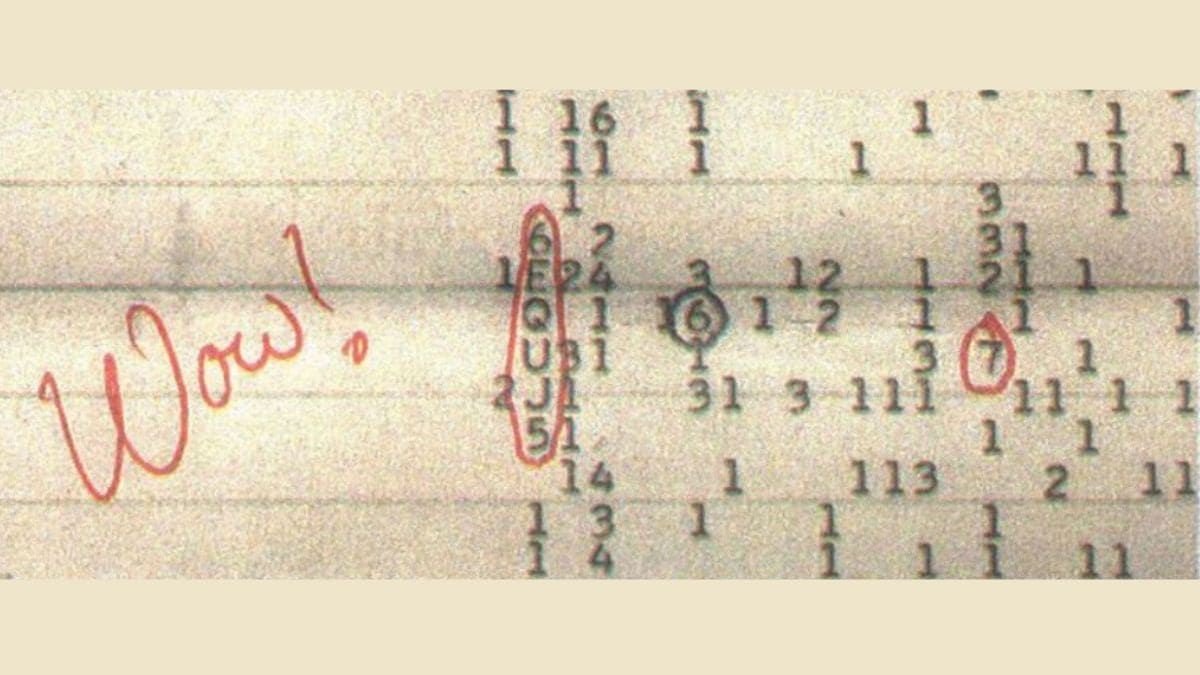The 1977 “Wow!” signal from the Big Ear radio telescope in Ohio has long puzzled astronomers. It was a brief, narrow-band radio burst lasting 72 seconds – so striking that astronomer Jerry Ehman famously wrote “Wow!” on the data printout. Despite decades of study, its origin remained unknown and no repeat signal has been found. In 2025, a multi-author international team re-examined these decades-old analog records using advanced computing methods. Their paper provides corrections and new insights into the signal and its possible origin.
Modern Data Analysis of the Wow! Signal
According to the study, volunteers digitized old Big Ear telescope logs using optical-character-recognition software. This allowed detailed recalculation of the signal's parameters. They narrowed the sky region (boosting location certainty by two-thirds) and adjusted the frequency from 1420.4556 to 1420.726 MHz. In practical terms, that frequency change implies the radio source was moving faster than previously thought. Most strikingly, the analysis found a much higher peak strength: about 250 Janskys at peak, far above earlier estimates of 54–212 Jy. (A Jansky is 10^−26 watts per square meter per hertz.) This means the Wow! signal was about four times more powerful than had been calculated before.
Possible Origins
Since neither satellites nor TV transmitters could have generated a continuous 72-second narrowband burst in 1977, the team was unable to find any indication of terrestrial interference. Those sources were ruled out because the Moon was on the other side of the planet and there was little solar activity. An astrophysical origin is most likely now that man-made causes have been ruled out. The main suspects, according to the researchers, are cold clouds of hydrogen gas, or HI clouds. Narrowband "maser" signals close to the hydrogen line frequency can be emitted by such clouds.
According to the most recent data, the cause might be a strong, uncommon hydrogen maser flare. Although the mystery remains unsolved, these discoveries significantly focus the search on natural occurrences such as dense interstellar hydrogen regions. The Wow! signal is still a well-known cosmic mystery that hasn't been solved as of yet.

Comments
Post a Comment